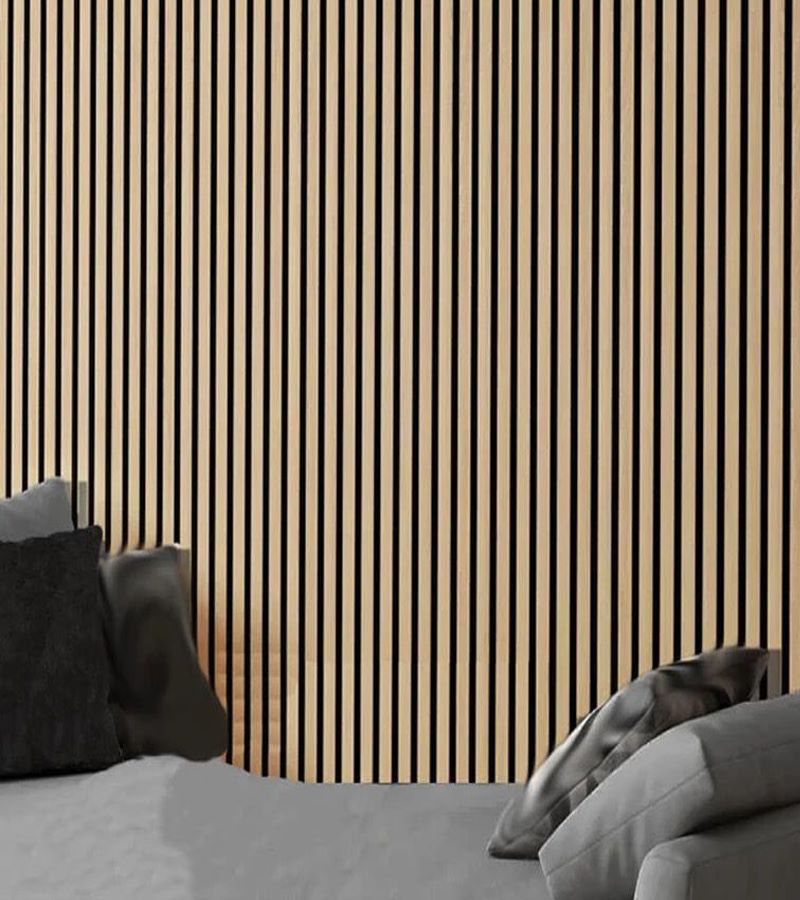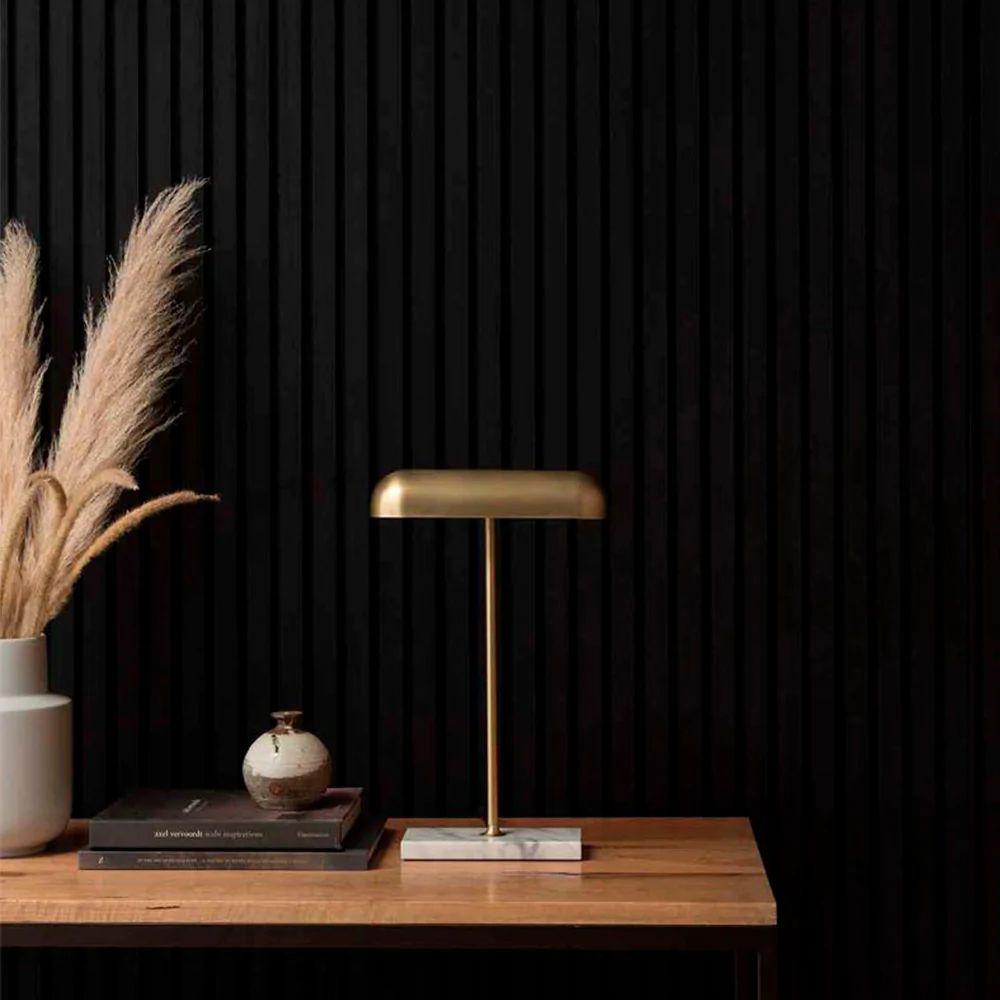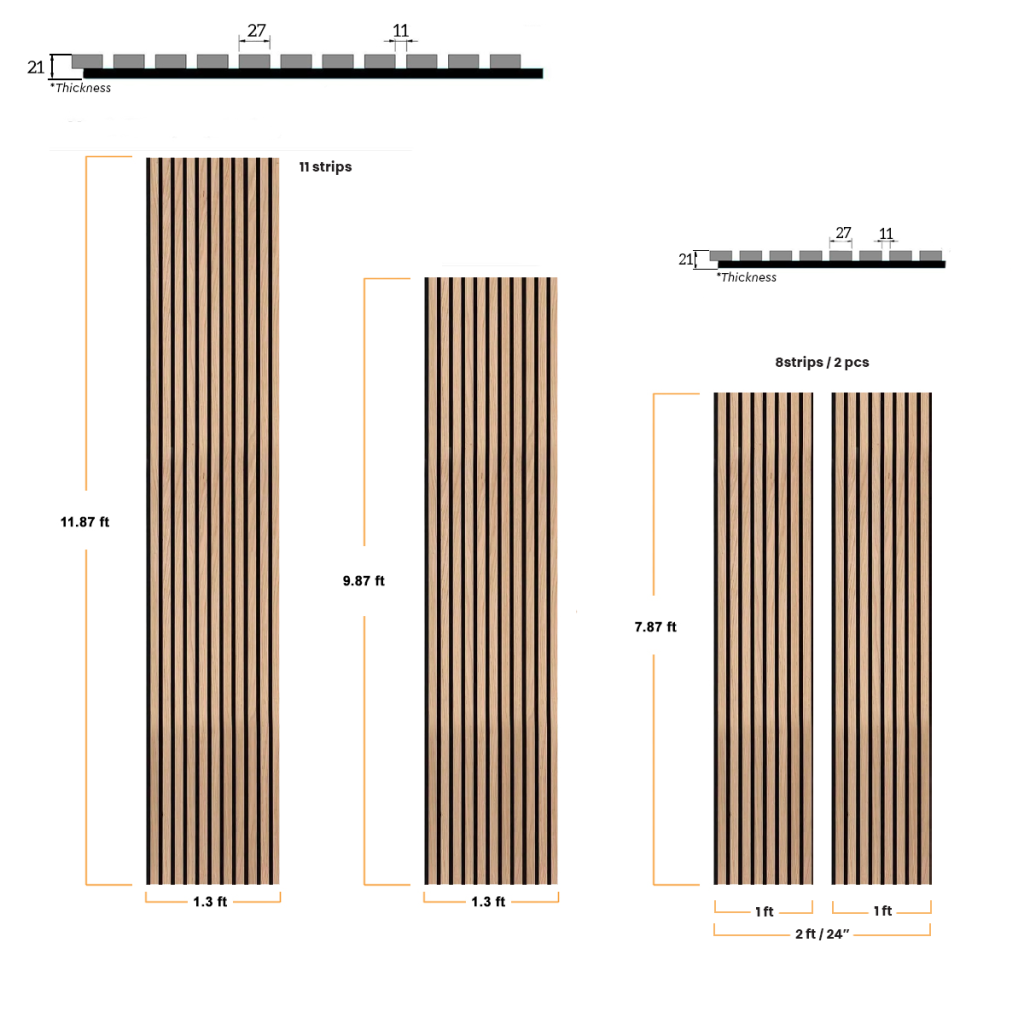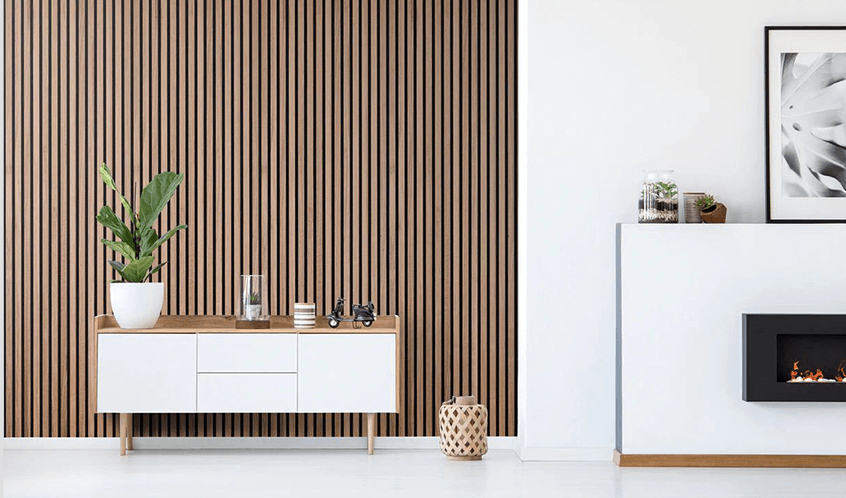What Kind of Wood Works Best for Wall Paneling?
Wall paneling adds texture, warmth, and a sense of depth that paint alone can’t achieve. But if you’re planning to install it, there’s one decision that matters more than color or layout: the type of wood wall paneling you choose. The right wood will not only impact the style but also how long your paneling lasts—and how well it handles everyday life. In this article, we’ll break down the best types of wood for paneling, how they perform in different environments, and what to consider when picking the right material for your home or project.
What Makes a Wood Type Ideal for Wall Paneling?
Not every piece of lumber is fit for wall use. When deciding on wood wall paneling, think about more than just appearance. A good paneling wood should offer:
- Dimensional stability: It shouldn’t warp or swell easily.
- Visual appeal: Grain patterns and tones should match your interior.
- Workability: It should be easy to cut, shape, or finish.
- Durability: Resistance to dents, scratches, and moisture matters.
Different rooms also have different needs. A cozy bedroom may benefit from soft pine, while a damp basement might need moisture-resistant cedar.
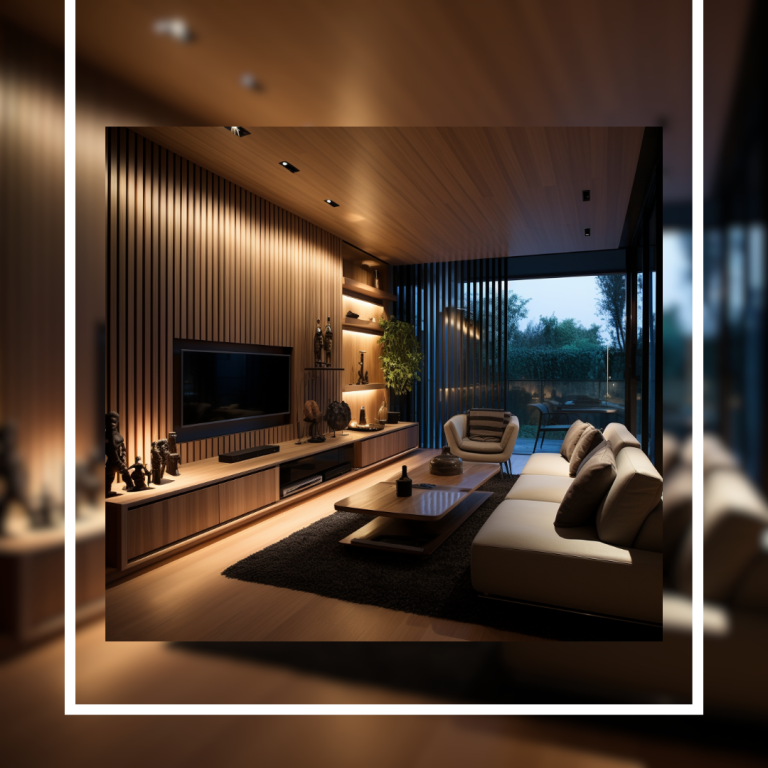
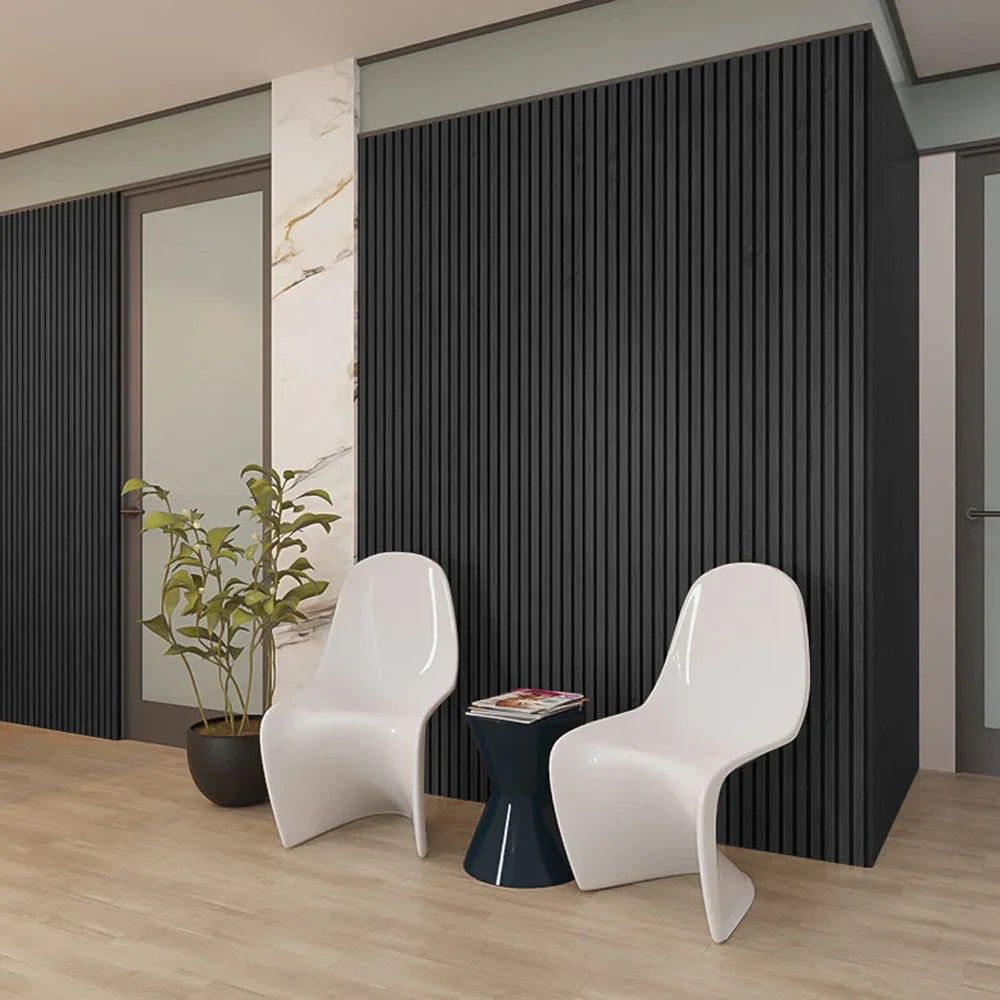
Top Wood Options for Wall Paneling
Let’s look at five top choices in Egg Harbor City, each with its own pros, cons, and ideal applications.
Oak
Oak is a popular hardwood for its bold grain and high durability. It holds up well in both traditional and modern settings.
Pros: Strong, long-lasting, stain-friendly
Cons: Heavier, more expensive
Best for: Living rooms, feature walls, upscale interiors
Pine
This softwood is lighter, more affordable, and has a charming rustic look. The natural knots give pine a laid-back, homey feel.
Pros: Budget-friendly, easy to stain or paint
Cons: Softer surface, more prone to dents
Best for: Farmhouse or cottage designs
Cedar
Cedar stands out for its natural scent and ability to resist moisture and pests. It’s a smart pick for humid rooms.
Pros: Naturally repels insects and resists decay
Cons: Slightly more expensive than pine
Best for: Bathrooms, closets, basements
Walnut
Walnut brings dark, rich tones and a smooth texture that screams luxury. It’s often used sparingly due to cost but makes a bold statement.
Pros: High-end look, durable
Cons: Expensive, not ideal for large-scale use on a budget
Best for: Accent walls, executive spaces
MDF (Medium-Density Fiberboard)
MDF is a manufactured product, made by compressing wood fibers. It’s affordable, smooth, and ideal for painted applications.
Pros: Consistent surface, doesn’t warp easily
Cons: Can swell with moisture, not stainable
Best for: Painted paneling or contemporary styles
Wall Panel Wall USA, Our business has enough experience of wood, we then put this into making a scope of premium wall framing that was immensely fruitful inside Europe and USA. Our Panel is 100% wood + Real Oak Finish Top. Wood Wall Cladding Siding Board. We provide Fast Delivery all over USA. Order Now!
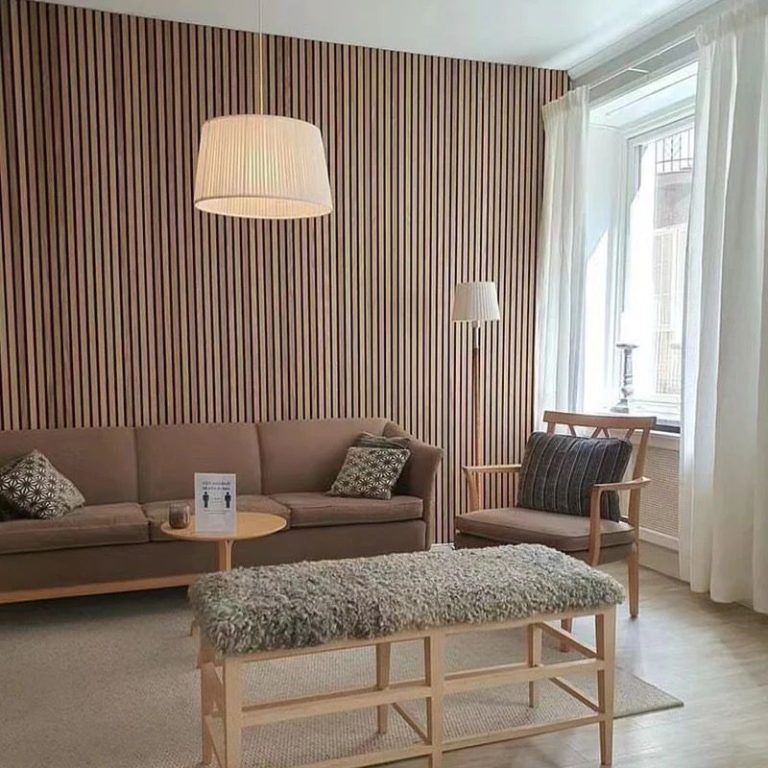

Natural vs. Engineered Paneling Materials
One of the most important things to think about when choosing wood wall paneling is whether to use solid wood or engineered wood goods. Solid wood paneling from oak, pine, or walnut has real grain designs, natural texture, and a classic look that many people love. Since you can sand it down and refinish it over time, it’s a good investment for the long run. But solid wood is usually more expensive, and it can change shape when the temperature and humidity change, which can cause cracks or warping if it’s not put together correctly.
An option that is cheaper and more stable in terms of size is engineered wood, like MDF (Medium-Density Fiberboard) or plywood. The way these materials are made means they won’t warp and have a flat surface, which is great for painting finishes. Engineered wood doesn’t have the same natural grain and feel as real wood, but it’s lighter, easier to work with, and a good choice for big jobs or modern rooms. It’s important to keep in mind, though, that manufactured panels, especially MDF, can warp when they get wet and usually can’t be refinished like solid wood.
Match the Wood to Your Design Style
A well-matched paneling wood can tie an entire room together. Here’s a quick pairing guide:
- Modern or Minimalist: Use smooth-grain woods like ash or walnut
- Rustic or Country: Knotty pine or reclaimed cedar fit best
- Classic or Formal: Choose oak, cherry, or walnut
- Casual or Coastal: Light-toned woods like white pine or bleached cedar
Finishes also play a role. Natural oils enhance the grain, while whitewashing gives a beachy, relaxed vibe. Paint, on the other hand, is ideal for MDF and contemporary interiors.
FAQs
A: Pine and MDF are easy to cut and install, making them great for DIYers.
A: Yes, solid wood can reduce echo and soften acoustics, especially when paired with insulation or sound-absorbing materials.
A: Use moisture-resistant wood like cedar or sealed engineered panels. Proper ventilation helps too.
A: Yes, but keep the tones complementary. For example, walnut and light oak can create contrast without clashing.
A: For solid wood, yes. It’s best to seal or finish it before installation to avoid moisture absorption.
Final Thoughts
There’s no one-size-fits-all answer to the best wood wall paneling—your choice depends on style, function, and budget. But in Egg Harbor City, we offer the best paneling for every homes’ walls. From sturdy oak to sleek MDF, each option brings something different to the table. Consider where it’s going, how it needs to perform, and what look you want to achieve. A well-chosen wood type doesn’t just cover a wall—it completes the room.

